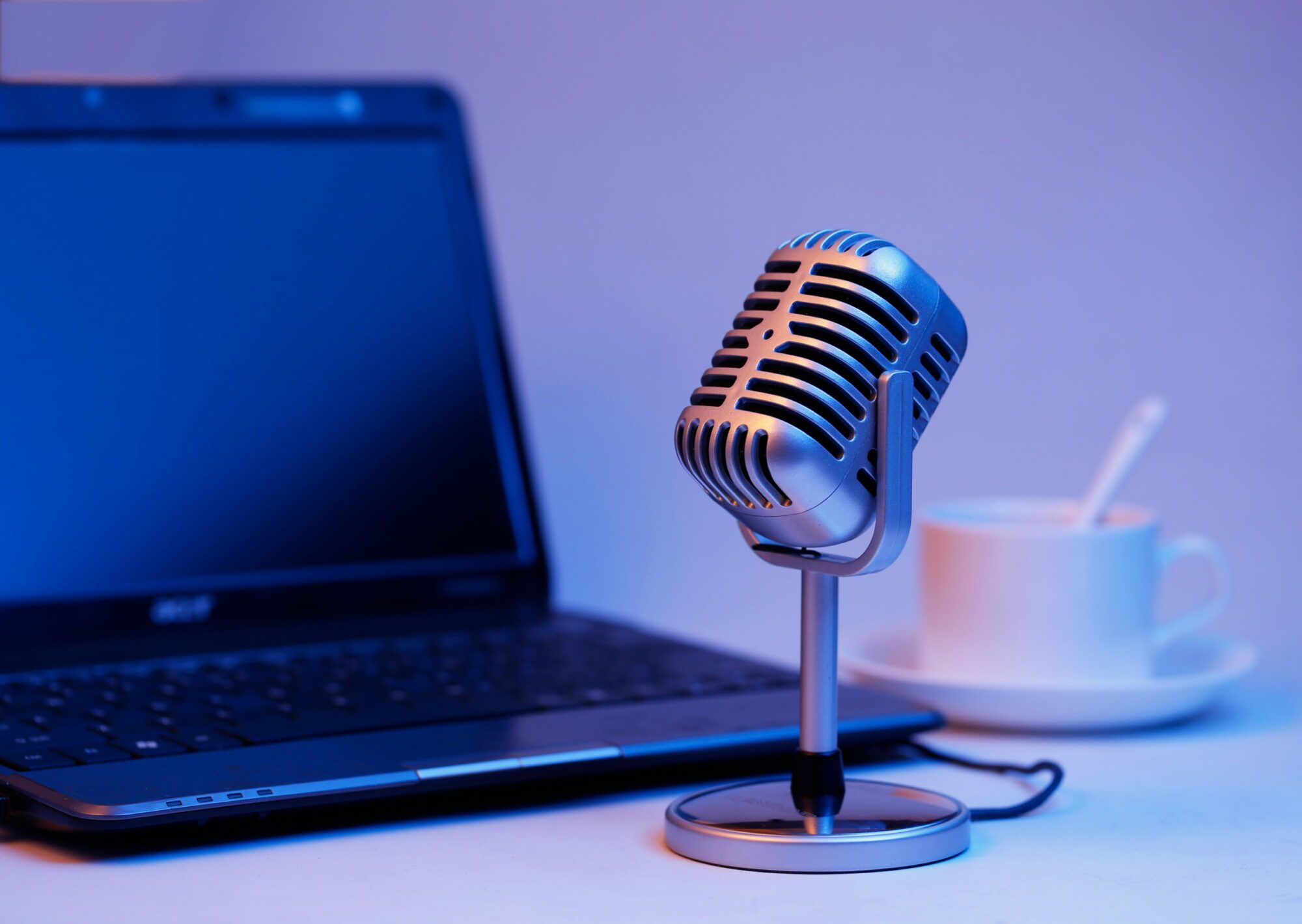When my teammates at Engenius said they wanted to launch a podcast shortly after I came on board, I was intimidated. Sure, podcasts were (and are) great things, and I’m an avid podcast listener, but helping create one seemed out of the question. The people who created podcasts understood technology, audio-mixing, and editing…I did not.
Still, I set aside my apprehension, worked with a team to create a podcast recording process, found the right partner for audio engineering/editing, and established a content calendar. And thus, The Engenius Podcast was born.
What I thought would take a team of experts, a sound-proof studio, and either years of experience or several degrees, was, in fact, possible with careful planning and a solid content calendar.
Now, one year later, podcasts are everywhere. Spotify, which owns the podcast streaming and creation platform Anchor, announced that 1.2 million new podcasts were added to Spotify in 2021 with 80% of those podcasts being made by independent creators. What does this tell us? The podcast industry is growing, and more and more people are turning to audio to tell the world who they are, what they do, and why they matter.
So with their rising popularity, and relative ease to produce, should your business consider podcasting? Let’s take a look.
In this article, we’ll Cover:
The Pros

Podcasts are ubiquitous. People listen to them everywhere and on every topic. From driving to mowing the lawn to doing chores — podcasts have become an easy and convenient way for people to entertain and inform themselves.
People search for new content based on hobbies, areas of interest, and growth. While some podcasts may be pure entertainment (True Crime anyone?), some provide helpful insight into business strategy, professional development, personal growth, and self-improvement.
Speaking is easier than writing. Not everyone is a writer and that’s ok! For many people, it’s easier to explain a concept to another person than to clearly articulate that concept on a page. You and your team may not have the time or the desire to write, edit and publish a blog once a month, but you may have time to have short, mic’d conversation that you review, send off for editing, and publish.
The barrier of entry isn’t as high as you may think. It’s easy to think you need professional recording studio equipment or a trained “host voice” to have a podcast. The reality? Retailers carry excellent, affordable mics to get you started and podcasts are intended to be conversational…not perfectly polished. If the point of your podcast is to advertise YOUR company and YOUR brand voice, then people will want to hear from you and your experts.
At its simplest, all you need to do is:
- Define the vision and goal for your podcast.
- Create a content calendar for suggested podcast titles, content, and speakers.
- Purchase a mic or two depending on how many guests you want to feature at a time.
- Create an account with a group that records, hosts, and posts podcasts (We use Anchor).
- Record.
It’s a trend and a chance to try something new. It’s easy to stick with what works in marketing, but “what works” doesn’t always get you in front of a new audience. Experimenting with new channels and new marketing techniques not only keeps your company agile — it also helps your team continue to grow their professional competencies.
The Cons
The Podcast Industry has seen exponential growth. One rough estimate suggests that, in 2024, there are approximately 5,000,000 podcasts, and it’s safe to say that this number will only continue to grow. The barrier of entry is low, and while that’s a wonderful thing for first-time creators, it’s also an invitation for anyone to grab a mic and post their thoughts. In a crowded space, you run a risk of being tuned out as more and more people turn to podcasts to spread their message.
Just because you made it doesn’t mean they will come. Spotify saw 28.3 million listeners in one month in 2021, but just because those users exist doesn’t mean that they know about your podcast. Creating and publishing your podcast on a larger network does not guarantee that people will know about your podcast. To get the ball rolling, you may need to promote your podcast on social media, tell friends, or even link relevant podcasts to relevant blog articles. In other words — you’ll need to spread the word that you have something to say!
You MUST have a clear vision for your podcast. You need to know exactly what you’re saying and exactly who you’re saying it to. Gone are the days when the quantity of your content outweighed the quality of your content. If your podcast doesn’t speak to your audience, they won’t listen. What do your listeners want to hear? What value can you contribute to them? What insight can you provide? Knowing the goal of your podcast will keep your speaking on topic, and your audience intrigued. Be helpful. Be concise. Be on point.

What Should Go in a Podcast?
The tongue-in-cheek answer is good content. The longer, more complex answer is that you need good content that draws people in and speaks to your audience directly.
Peter Altschuler, in an article for Marketing Profs, a free online resource for marketers, shares the following:
On the very most basic level, you have to tell them what you’re going to tell them, then tell them, then tell them what you told them. Unless a viewer is recording the show and can rewind, you’ve got to make sure you make your point on a first hearing or viewing, and the repetition ensures that happens. On TV, of course, visuals help tell that story. That’s not an available advantage in a podcast. And that’s why it’s so vital to stick to the subject and the most vital facts. You have to use words to draw pictures, and that takes particular skill.
Your podcast should have a defined theme and a set talking list for each episode. Like a paper, you will need a defined beginning, middle, and end.
How to Start a Podcast
Starting your podcast can be simplified into 4 main steps:
Define who your audience is and what you will be telling them. This has been said a lot in this blog, but it makes it no less true. Research who your audience is and then formulate your podcast to fit their needs. A first-time homeowner may not need (or want) to know the minute details of various home maintenance techniques…but they probably do want to know what to do if a sink backs up, a window breaks, or a breaker blows.

Find your team. Not everyone loves recording and not everyone loves editing. Finding the people on your team who are well-suited to the podcast, and have the bandwidth to do it, is important. If no one on your team has the technical expertise to edit and produce your podcast, consider contracting a local freelancer or turning toward talent hubs like Fiverr. You’d be surprised how convenient it is to partner with people all over the world in this new digital age.
Order your equipment. Modern audio and recording equipment is impressive compared to its earlier iterations and much less expensive than expected. Your recording setup should work for you and for your team — which means that ultimately you’ll need to decide for yourself how you want to record.
Some pro tips to consider include:
- It’s possible to record remotely using Zoom and Bose or Apple headphones, something your employees may already have.
- Amazon, BestBuy, and many other retailers carry inexpensive, quality mics and your podcast editor/producer may be able to recommend a basic setup option.
- Garageband (on Mac) and Anchor are free recording tools.
- You can always upgrade! Start small as you experiment with this new channel and if you enjoy it and see success — purchase nicer equipment as needed!
Prep your boilerplate copy. We hold a 30-minute storyboard meeting a few days before every podcast where we write down the main talking points, look up relevant statistics, and make sure the upcoming podcast has a “flow” to it. Each storyboard document is based on a template with the same welcome message, mid-way commercial message, and ending “thank you” message. Our boilerplate copy allows us to announce who we are, what our podcast is about, and who helps create it with consistency and clarity. It also gives our podcast a predictable rhythm for our listeners.
How to Tell if Your Business is Right for a Podcast
Like any marketing endeavor, podcasting may not be for everyone. As you discuss whether or not to join the podcasting world, it’s wise to consider the following questions:
- Is your audience a podcast audience or do they prefer other forms of media consumption? An audience that’s too old or too young may not be the right fit for podcasting.
- Do you have the bandwidth to start a new initiative? Whether you’re overwhelmed with sales (we hope so!) or already spending your marketing budget elsewhere — bringing on a new initiative when your focus is already tied up will most likely lead to a mediocre podcast and/or lackluster results. It may be better to hold off until you have the time and energy to make this a reality.
- Can you maintain a steady posting rhythm? Whatever expectation you set for publishing content will need to be maintained. (Audiences don’t like to be disappointed). If you can’t keep up with the schedule you outline, then podcasting may not be right for you.
- Do you think you can fill a need in the podcasting world (or in your area of expertise)? Can you say something in such a way that others will find the information useful? If yes — proceed! If no — go back to the drawing board and come up with the thing that makes your podcast unique and go from there! Whether you choose to podcast or not — the goal should always be clear communication that speaks to your customers’ needs or pain points.



